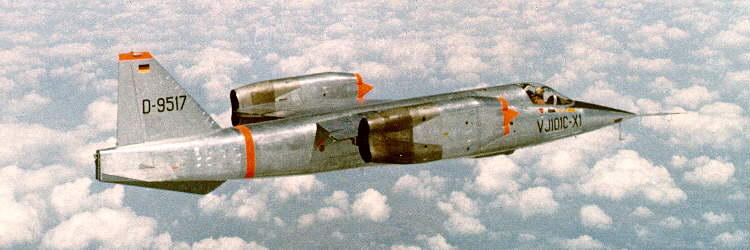|
Single seated high-wing monoplane equipped with six engines. Two lift engines
in the fuselage behind the cockpit and two each in swivelling engine pods
on the wing ends for lift and regular flight. VTOL-flight attitude control
by thrust modulation in contrast to attitude control by bleed air through
control nozzles. The thrust modulation made the aircraft controlable in
case of a single engine malfunction and avoid the loss of efficiency by
using compressor bleed air. Interceptor design, experimental aircraft without
armament. The Rolls-Royce RB 145 jet engines would have been replaced by
the more powerful RB 153 in production aircraft.
|







